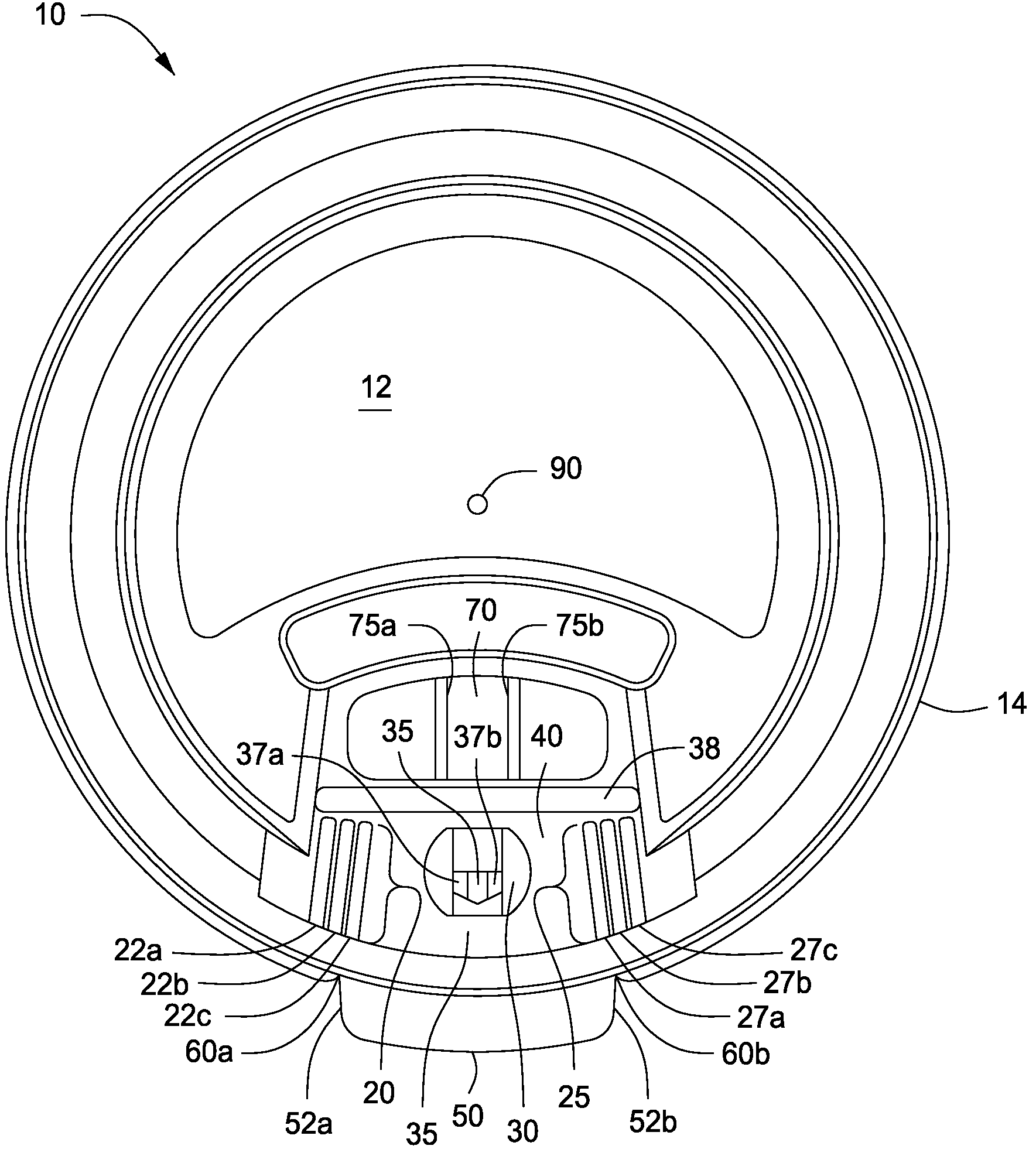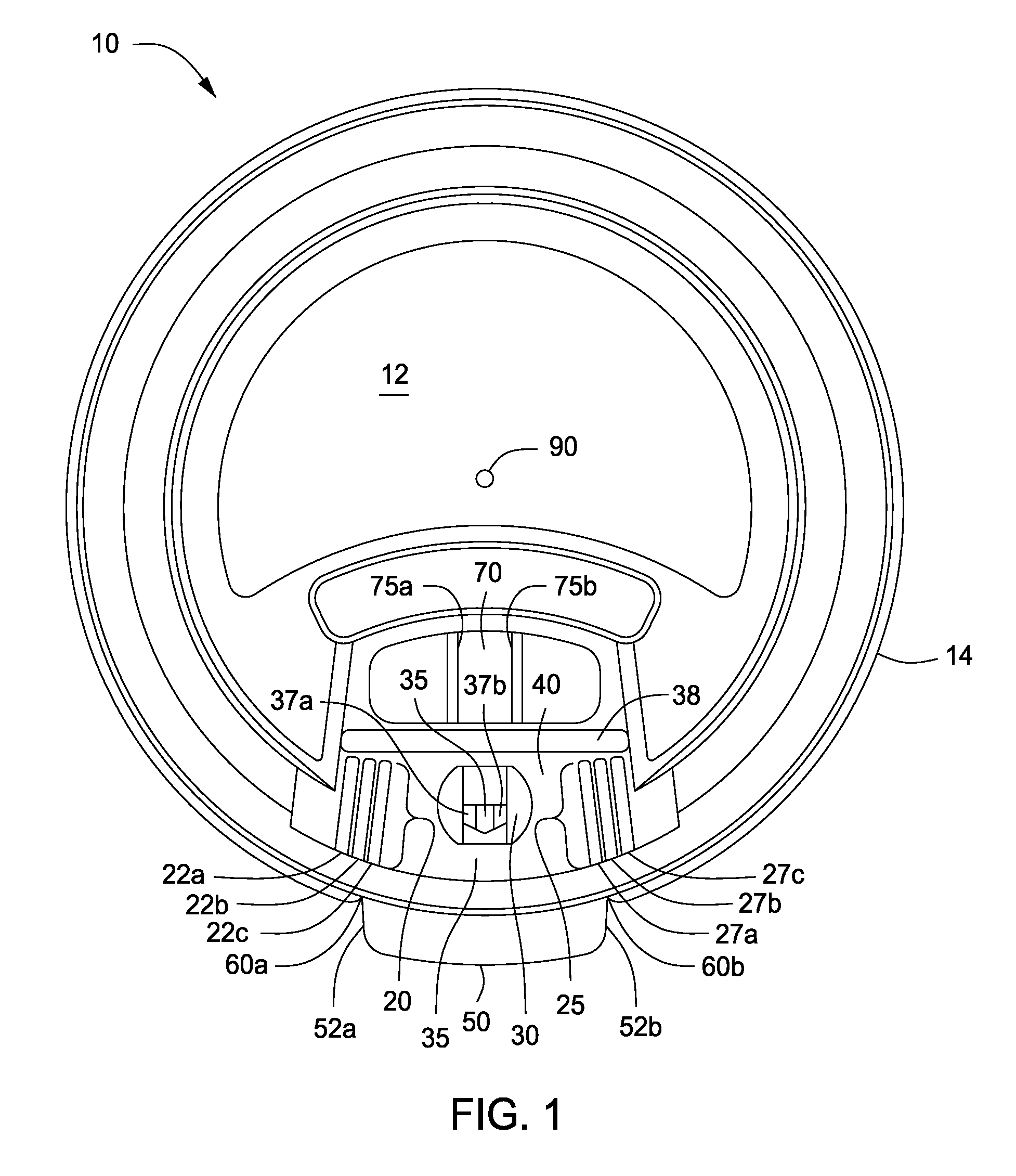Filled polystyrene tear back container lids
a thermoformed polystyrene and container technology, applied in the direction of caps, drinking vessels, liquid handling, etc., can solve the problem of little motivation to include fillers into formulations, and achieve the effect of excellent tearability
- Summary
- Abstract
- Description
- Claims
- Application Information
AI Technical Summary
Benefits of technology
Problems solved by technology
Method used
Image
Examples
example 1
Test of Multiple Filler Levels
[0040]Lids were made from filled HIPS resin to provide lids having the configuration shown herein. The resin used was from Chevron-Phillips and comprised a mixture of EB6085 and EA3300.
[0041]The amount of filler was tested as set out below. No colorant was included in the noted samples, thereby providing a translucent lid. The depth of the grooves forming each set of tear back portions was also examined as a variable. The lids were formed as set forth in the diagram of FIG. 1.
[0042]
TABLE 1Prototype Lids TestedTargeted % ofDeep Tear BackShallow TearCaCO3 AddedRib MoldsBack Rib MoldsColor 0% CaCO321 & 2425 & 27Translucent10% CaCO321 & 2425 & 27Translucent15% CaCO321 & 2425 & 27Translucent20% CaCO321 & 2425 & 27Translucent25% CaCO321 & 2425 & 27Translucent
Observations:[0043]Samples made with 11% and 15% CaCO3 had the best performance as compared to the other amounts of CaCO3.[0044]Lids made with the deeper tear back ribs had slightly better performance tha...
example 2
Additional Filler Test Data
[0059]Lid Dimensions:
[0060]Lids including colorant were tested at 0% CaCO3 and 15% CaCO3. The formula was as follows:[0061]55%—EB6025[0062]23%—EA3300[0063]15%—CaCO3 [0064]7% brown colorant
[0065]A masterbatch of colorant and CaCO3 was prepared with the EA3300, followed by dilution of the masterbatch in the EB6025.
[0066]Observations:
[0067]Lids not having CaCO3 weighed about 5% less than the lids with CaCO3.
[0068]The average BOD (bead outside diameter) of the two trial variables was within 0.001″ of each other.
[0069]The RID (rim interior diameter) of the sample set without CaCO3 averaged 0.004″ smaller than the variable with CaCO3.
[0070]
TABLE 4Lid Dimensions and WeightWeightBODRIDFiller Parameters(Grams)(Inches)(Inches)No CaCO32.3243.3183.26415% CaCO32.4383.3193.268
[0071]Lid Fit Testing:[0072]Lid fit testing was conducted using an in-house Lid Fit Test which is designed to determine if the lid fit is adequate enough to prevent leakage when the cup is tilted.
[...
PUM
 Login to View More
Login to View More Abstract
Description
Claims
Application Information
 Login to View More
Login to View More - R&D
- Intellectual Property
- Life Sciences
- Materials
- Tech Scout
- Unparalleled Data Quality
- Higher Quality Content
- 60% Fewer Hallucinations
Browse by: Latest US Patents, China's latest patents, Technical Efficacy Thesaurus, Application Domain, Technology Topic, Popular Technical Reports.
© 2025 PatSnap. All rights reserved.Legal|Privacy policy|Modern Slavery Act Transparency Statement|Sitemap|About US| Contact US: help@patsnap.com



